
18+ School Meeting Minutes Templates – Word, PDF, Apple Pages
Designed for taking important decision regarding the academics of a schooling session, these school templates are pretty useful in designing…
Sep 11, 2023
Minutes are an official record of the actions taken at a meeting by the board or committee, not a summary of everything that had been said. They serve a historical purpose but just as critically they serve a legal purpose, recording the adherence of the community to the proper procedures and the bylaws of the organization. They are the official, written record of an agency or group’s meetings.


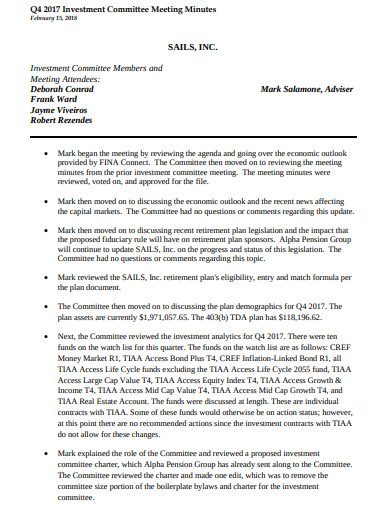 sailsinc.org
sailsinc.org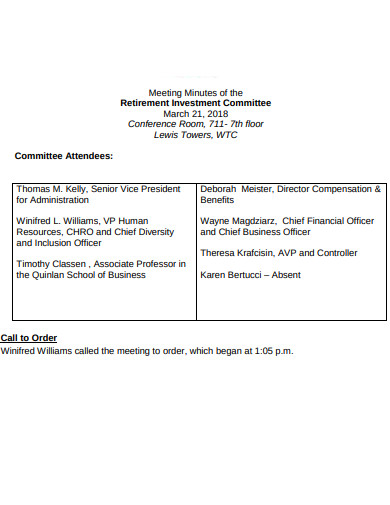 luc.edu
luc.edu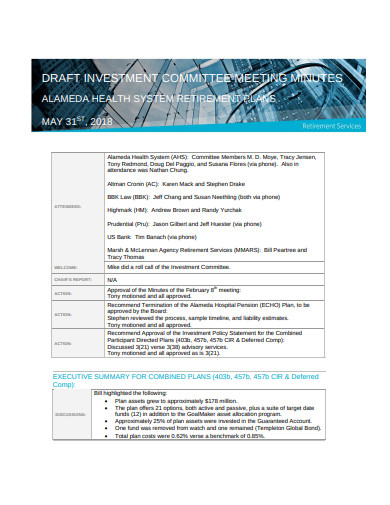 alamedahealthsystem.org
alamedahealthsystem.org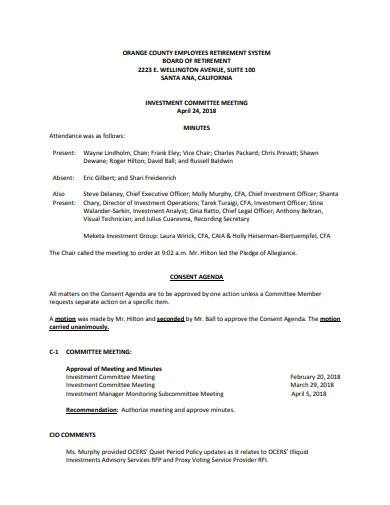 ocers.org
ocers.org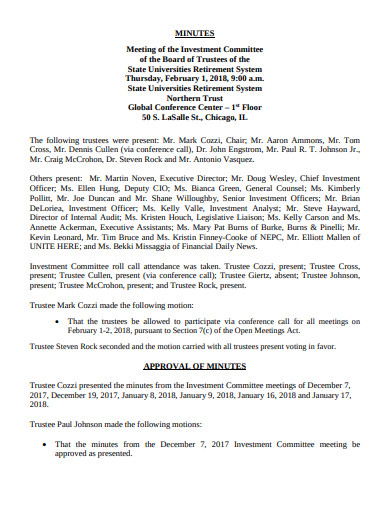 surs.com
surs.com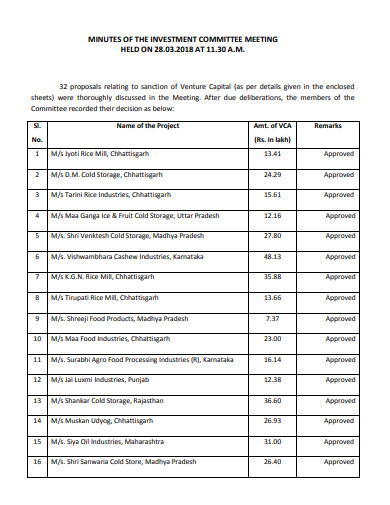 sfacindia.com
sfacindia.com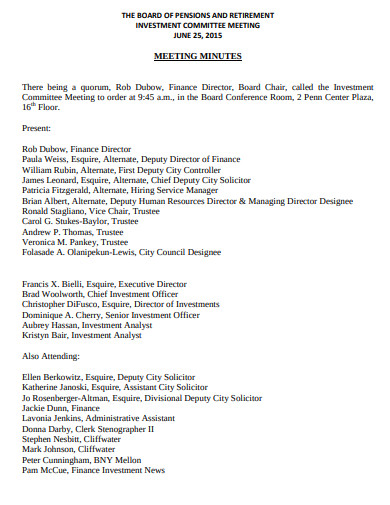 phila.gov
phila.gov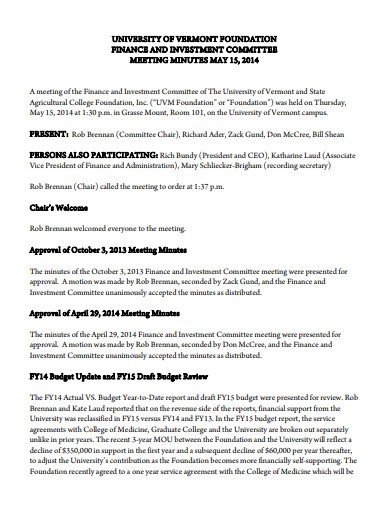 uvmfoundation.org
uvmfoundation.org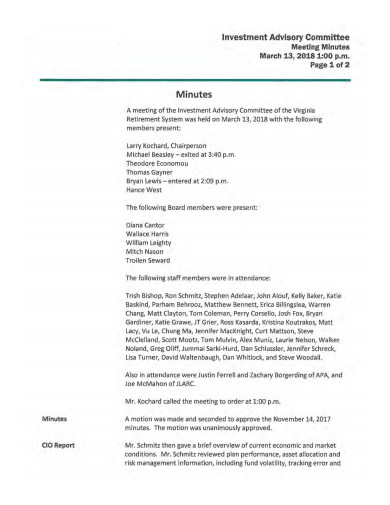 retire.org
retire.org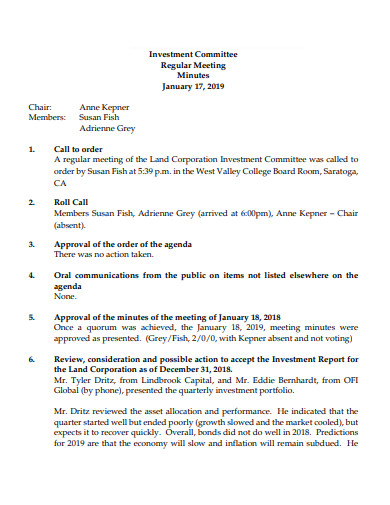 wvm.edu
wvm.edu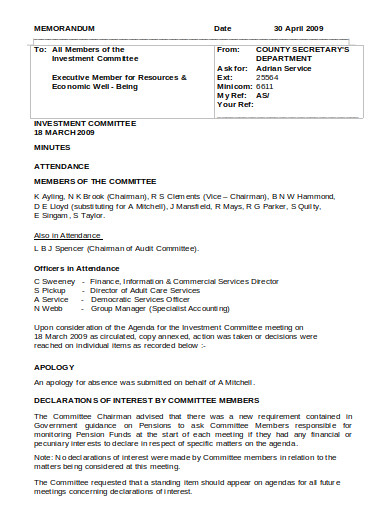 hertfordshire.gov.uk
hertfordshire.gov.ukWriting minutes can take some time, and can seem like an unimportant task compared to getting on with “actual work,” but it can be costly in terms of time and resources not taking minutes to meet. If you don’t take minutes, you’ll find your friends have different memories of the session than you have. Both may also have different views about what had been decided upon. If there are no minutes, then by the due date important tasks will be forgotten or not accomplished. The production of minutes of meetings provides a written record of what was decided at a meeting. Good minutes of meeting tell people what they have decided and what they need to achieve, and by what date. If minutes of the meeting are obtained it jogs the memory of the things people have to do. If a mission is not completed then you can refer back to the minutes of the meeting and follow it up. Before meeting minutes, if an operation was not carried out, you will have no redress. In the worst case, if you don’t write minutes of meeting you may end up having to repeat the meeting.
In some cases, minutes of the meeting may be mandatory for legal reasons. An example of this is where it is provided by municipal bylaws for certain forms of organizations. Besides, they might be needed for worker supervisory meetings. A good practice is to get into the habit of taking minutes of the meeting.
The minutes must involve the title of the meeting community; the date, time, and location; the details of those present (including staff) and the person writing the minutes; and the agenda. The meeting minutes will follow the agenda order, with a simple, almost ambiguous, overview couple of sentences for each object, together with the name of the person presenting it. Vote totals taken in their position of the order will appear on the agenda. Don’t necessarily have names. Document what occurred, instead: “Action: Movement made, seconded, and carried.” There is one exception: Unless the committee accepts an executive pay or a money transfer with a member of the board, that action should be recorded — along with the names of those who voted for and against, the information provided on which they based their decision, and the result. Such extra detail may help to establish a clear and convincing assumption that the action was fair, and may help to avoid IRS.
Because minutes are public papers that participants can request to review, be clear about what to remove. Avoid the direct quotations; the speaker may be identifiable even without a name. You do not have to report details about the conversations, especially those who said what. While addressing topics, not on the agenda, simply state that “the opportunity has been allocated for members to address issues, not on the agenda.” And keep in mind that minutes are not the spot for potential deliverables or to-do lists. Finally, delete all documents and audio or video transcriptions of the meeting once the minutes are authorized. The final authorized minutes ought to be the only account of the conference you are circulating and preserving.
The five steps that you must include in a minute are:

Designed for taking important decision regarding the academics of a schooling session, these school templates are pretty useful in designing…
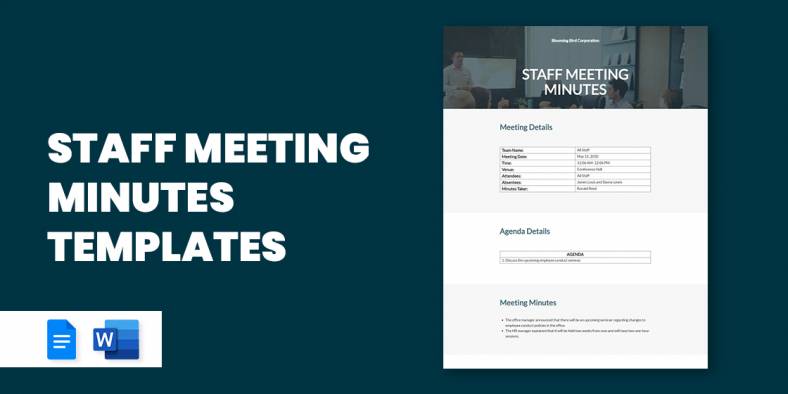
Time is valuable and if you have got a meeting round the corner then you will certainly want it to…
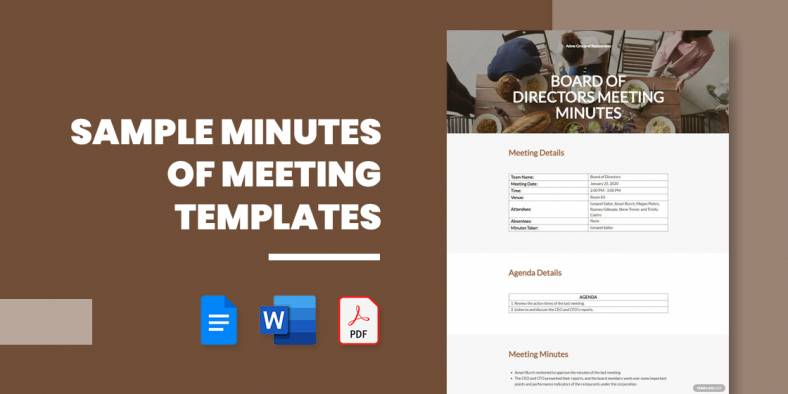
The minutes of the meeting of a particular organization needs to be carefully preserved to aid in future decisions as…

You might attend various types of meetings, from formal meetings to informal meetings. To keep track of these meetings, the…

Every staff meeting that takes place in an organization is valuable. They are important because the most crucial decisions in…

Minutes are an official record of the actions taken at a meeting by the board or committee, not a summary…

Charity Meeting Minutes are also known as minutes of the meeting. generally, they describe the things took place in the…

meeting minutes meeting minutes in word meeting minutes in docs meeting minutes in pages free meeting minutes nursing note sample…

Meeting Minute Free Meeting Minutes School Meeting Minutes Sample School Meeting Minutes Free Sample Minutes of School PTA Meeting Professional…